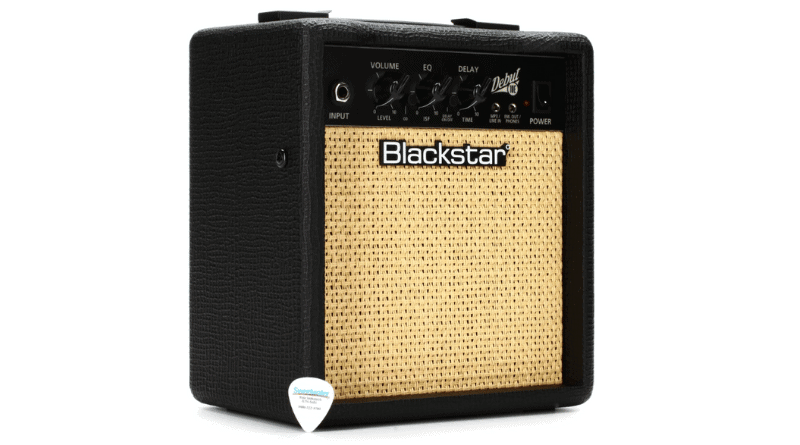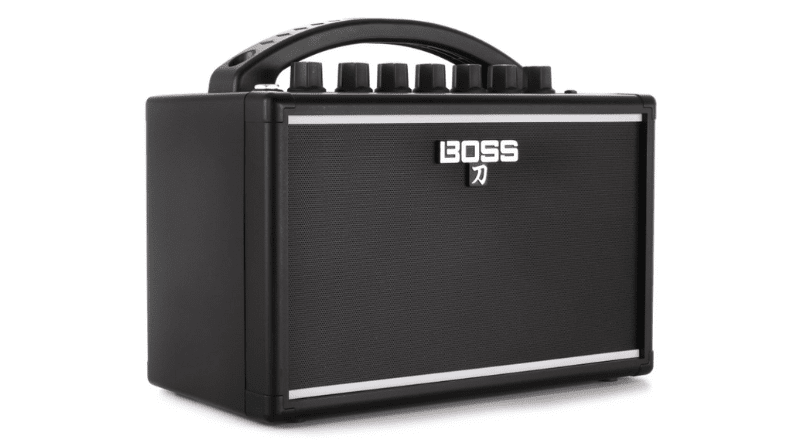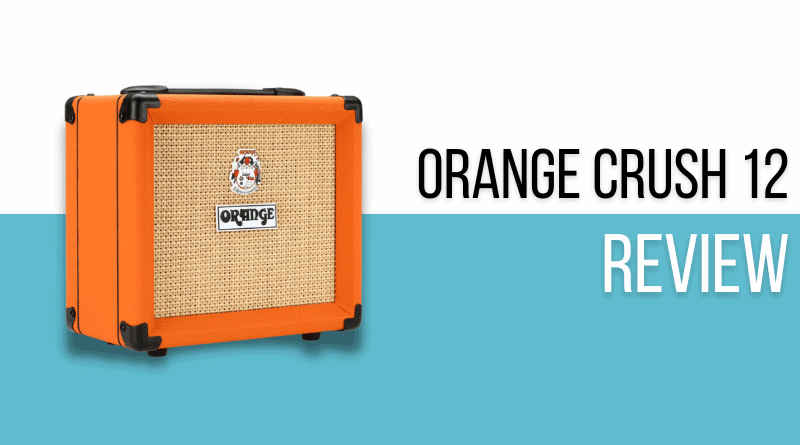There are a few names that really stick out when it comes to iconic British amplifiers – Marshall, Vox, and of course, Orange. Best known for their fantastic orange tolex coverings, and their big brutal tones, Orange Amps have become synonymous with rock and roll in a way that few other brands can say.
While their fame is mostly derived from their big tube amps of the rock and roll revolution, like most major manufacturers, they’ve also branched out with lines of more affordable, and just as importantly, portable amplifiers. One of our favorites is the Orange Crush 12. This is a great little practice amp that we happened to name our “Best for Rock” pick in our roundup of the best amps under $100.
Since first publishing this review, the price for the Crush 12 has gone up by $10, putting it slightly above the $100 mark, but we think it’s still well deserving of its original title.
In this KillerGuitarRIgs Review, we’ll be taking a closer look at this Punchy little Orange, bringing you more details about its construction, features, useability, and most importantly, its tones.
Read more about our review process.
Contents
Orange Crush 12: Who is This For?
The Orange Crush 12 is an excellent choice for both beginners and more experienced players. Its compact size and budget friendly price make it a great choice for anybody who might be limited on space, or perhaps just working with a tighter budget.
It’s easy to use and features a variety of controls for shaping your sound, making it a viable option for players of all skill levels. Beginners will find that the learning curve isn’t too steep, while those with more experience will appreciate the relatively full featured control panel.
Appearance / Features / Controls
The Orange Crush 12 is a small, practice amplifier that is at its core, is designed to be portable and easy as possible to use. This is a solid state model with a total power output of 12 watts and moves air with its single 6-inch “Voice of the World” speaker.
Of course, it has the classic Orange tolex covering and tweed grille, giving it the iconic look the brand is best known for. The cabinet was made with particle board, and helped to keep the weight down to a svelte 10.4lb.
As with most orange amps, it had its control panel at the top, where we found a 3-band EQ for shaping the sound, as well as a single 1/4-inch input. It also had a 1/4-inch headphone output with cab sim speaker emulation.
It only had a single channel, but it featured volume, gain, and overdrive knobs, which make going from clean to crunchy tones a simple affair.
Performance / Sound
With a total power output of 12 watts, this isn’t the most powerful amp on the market, but at this price point, you’d be hard pressed to find one that delivers better rock tones.
One of the most impressive features of the Orange Crush 12 was the fact that it had a full 3-band EQ, something we don’t often see on budget practice amps. This allowed for proper sound shaping, which let us dial in the tones we wanted on both single coil and humbucking guitars.
When it came to clean tones, the Orange Crush 12 did a great job. It had a bright and clear voice, with good articulation. It responded well to dynamic playing, and handled abrupt changes in attack very nicely.
Distorted tones are what Orange is best known for, and the Crush 12 didn’t disappoint. While it didn’t have the punishing distortion of its bigger brother the Rockerverb, it still delivered a fantastic classic rock tone that was reminiscent of the original Orange amps of the late ‘60s and ‘70s. Manipulating the gain and overdrive controls allowed us to dial in a range of different overdrive levels, from a light crunch to a pretty robust metal tone.
The bottom end was punchy and tight, with a solid bass response that is perfect for rock and metal. Considering it was just a 6” speaker this was somewhat surprising, but with modern amp tech, manufacturers are capable of so much more than they ever have been.
We found the mids to be well focused, which helped to prevent any muddiness, and while it’s unlikely that you’ll use this amp in any kind of mix, we think it would cut through quite well should you ever need it to.
Other Amps to Consider
The Orange Crush 12 really is a lot of fun to play with. It’s easily one of, if not the best looking amp at its price point, and it offers the kind of reliable performance you’d expect of any Orange amplifier. If it’s not quite what you’re looking for, there are some other great options on the market – we’ve highlighted two of our favorites below.
Blackstar Debut 10E

The Blackstar Debut 10E is one of the newest models in the British brand’s lineup, but it’s fast causing a stir on the budget amp scene. Building on the runaway success of the Blackstar Fly 3, the Debut 10E delivers high quality tones in a more powerful package. At 10 watts, it’s not quite as loud as the Orange, but it’s still got plenty of punch for practice or jamming with friends. It’s a 2 channel amp, so you’ll be able to take advantage of the overdrive channel for dirty tones, and it even features a built in delay effect.
Boss Katana Mini

The Boss Katana Mini is without a doubt one of the best mini modeling amps ever to hit the market. It’s extremely portable, but offers an incredible feature set, including 3 amp voicings, 3 band EQ, and like the Blackstar, a built in delay effect. The sound quality is absolutely phenomenal for the price, and it’s small enough to even fit in a backpack. With 7 watts of power, it’s best suited to practice at home or on the road, so if you’re looking for a high quality amp, and you need it to be compact, this is a great choice.
Final Thoughts on the Orange Crush 12
The Orange Crush 12 is a fantastic little amplifier for anybody looking for real classic rock tones on a shoestring budget. It’s well made, it looks fantastic, and the tones really are superb. Having so much control in a small amp like this is practically unheard of, too.
For us, the one thing it was really missing was an aux in for playing along with a backing track, but this was a pretty small complaint. Regardless, it still offers reliable performance, and still makes for a fantastic first amp, or for a compact practice amp for guitarists who might be a little short on space. If you’re into rock tones, and you’re trying to spend around $100 – this is your amp!


